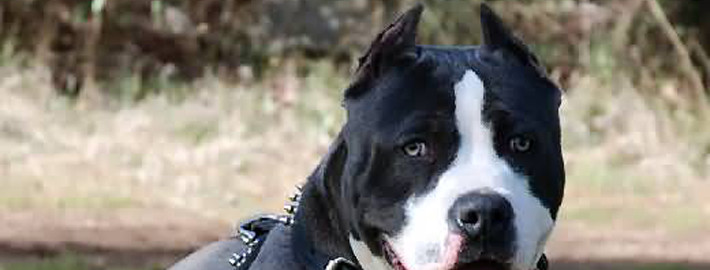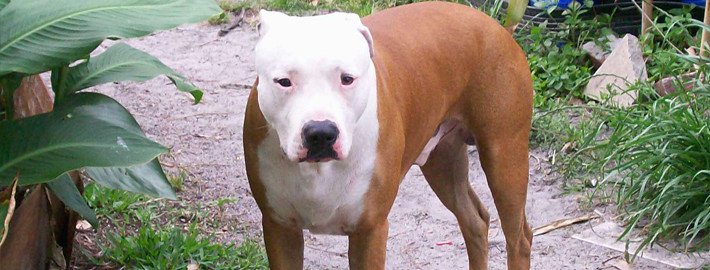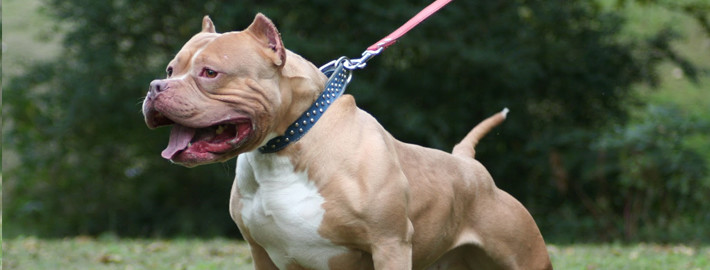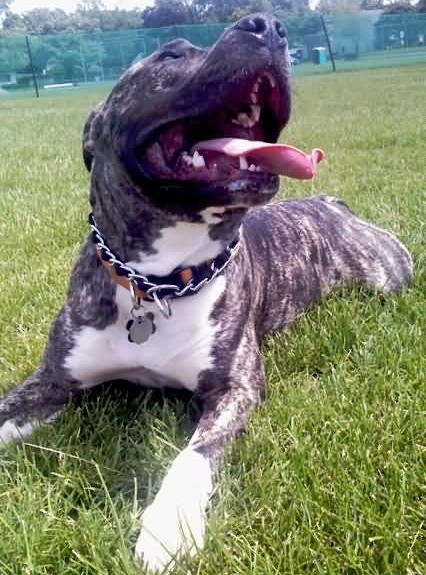What makes the American Pitbull Terrier Unique?
A fiercely loyal dog, the American Pit Bull Terrier is quite devoted to its human family. Despite their undeservedly poor reputation, these dogs can be loving pets when properly trained. Pit Bulls make wonderful members of active, one-dog households.
Breed Groups
Page Contents
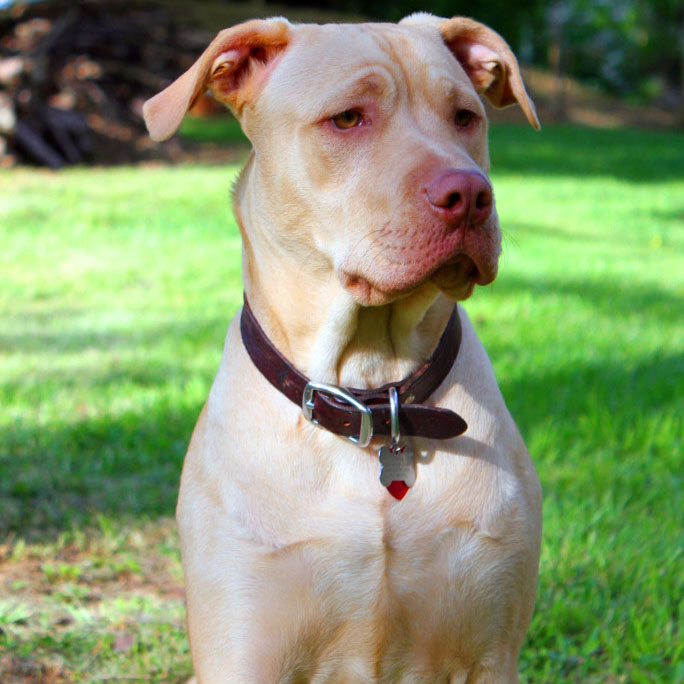
SnapShot
Is the American Pitbull Terrier Right For You?
In 5 Words
- Alert
- Cheerful
- Intelligent
- Loyal
- Social
Characteristics
Learn About the American Pitbull Terrier
Description
General
The American Pit Bull Terrier is a powerful and athletic dog of medium stature. It is solidly built with well-defined muscles. These dogs have bodies that are just slightly longer than they are tall. However, females of this breed may be somewhat longer in body shape than their male counterparts. When measured from point of elbow to the ground, a dog’s front leg length should be approximately equal to one-half of the dog’s height at the withers. Pit Bulls should have medium length heads, a flat skull, and a wide muzzle. Their ears should be small to medium in size and high set. Their ears may be either natural or cropped. Their comparatively short, low set tails are thick at the base and taper to a point.
Size
Breed standards call for males to weigh between 35 and 60 pounds or 16 and 27 kilograms. Female dogs should be between 30 and 50 pounds or 14 and 23 kilograms. Both genders should measure about 17 to 21inches, or 43 to 53 centimeters, at the shoulder blades.
Coat
The American Pit Bull Terrier comes in all colors and color patterns. Breed standards do not accept merle and albino dogs. All Pit Bulls should have short, close coats that are glossy and slightly stiff the to the touch.
Short History of the American pitbull terrier
While the exact origins of the American Pit Bull Terrier are unknown, the breed’s ancestry can be traced back about one hundred and fifty years to England. Around the late 18th and early 19th centuries, dogs were bred to excel in the popular sport of bull-baiting. They were also quite useful in hunting game and helping farmers control badly behaved cattle. The modern American Pit Bull is thought to have originated from a cross between terriers and old English bulldogs.
Initially, bulldogs were not a breed but more a description of what the dogs did. This name was therefore applied to dogs that were good at bull-baiting and had descended from ancient Mastiff- type breeds. These historical fighting dogs more were closely related to the American Pit Bull Terriers than the English Bulldogs one sees today. However, calling Pit Bulls “bulldogs” persists today even among breed fanciers. This could, in part, be due to the bad press the breeds have received over the years. Yet the most decorated service dog was, in fact, a Pit Bull named Sergeant Stubby.
The breed was officially recognized by the United Kennel Club in 1898, when Bennett’s Ring became the first registered member of the breed. They were recognized by the American Kennel Club in 1936 under the name of Staffordshire Terriers. These dogs later became known as American Staffordshire Terriers in 1972. The American Pit Bull Terrier and the Staffordshire Terrier have similar breed standards but the bloodlines do not often mix.
Temperament
Even around strangers, Pit Bulls are generally friendly dogs yet they are also quite unaware of their larger stature. This can sometimes cause problems as both accidental injuries of family members and misunderstandings with neighbors are not uncommon. Therefore, this breed is a poor choice for families with young children or those that contain smaller framed adults. Pit Bulls are poorly suited to being left alone for long periods and will not function well in the backyard if left to their own devices.
Proper training and socialization from a very early age is the best course of action when adopting American Pit Bull Terrier. Despite their reputation, these dogs are not breed to show aggression towards people and this is considered a very undesirable trait. Yet it must be noted that American Pit Bull Terriers do not often get along well with other dogs. This breed is also generally incompatible with cats and other small animals.
Pit Bulls are usually quite energetic.They also like to dig and chew. Therefore, this breed requires both exercise and mental stimulation in order to properly channel their high spirits. This prevents the dogs from becoming frustrated, bored, or destructive. Pit Bulls also tend to be among the more vocal dog breeds, so prospective owners should keep that in mind when deciding to get one.
Caring for Your American Pitbull Terrier
General Health
In good health, American Pit Bull Terriers will live between twelve and fifteen years. As with any breed, most members tend to be healthy but certain health conditions can crop up from time to time so it is best to know what to be on the lookout for when considering a new pet. Hip dysplasia, allergies, hypothyroidism, and heart diseases are among some of the most common health conditions in Pit Bulls.
The aforementioned hip dysplasia is a malformation of the hip joint ball and socket. Depending on the severity, the ailment can be very painful. Breeding stock should have x-rays of their hips done at 2 years of age to ensure they show no signs of hip dysplasia.
Environmental allergens such as fleas, grass, pollen, and dust can easily cause allergic reactions in Pit Bulls. Reactions to beef, rice, wheat, and corn are among some of the more common food allergies found in dogs, but this condition is less common. Intense discomfort and itching can follow allergies. This may cause dogs to chew and dig until they start bleeding, which then puts them at risk for secondary infections. It is best to remove allergies from dog’s environments or diets where possible. Veterinarians can help owners determine what their pets are allergic to and recommend a course of treatment.
Environmental allergens such as fleas, grass, pollen, and dust can easily cause allergic reactions in Pit Bulls. Food allergies are less common but can be triggered by common ingredients such as beef, rice, wheat and corn. Intense discomfort and itching can follow allergic reactions. This may cause dogs to chew and dig until they start bleeding, which then puts them at risk for secondary infections. It is best to remove allergens from dog’s environment or diet in order to prevent illness. Veterinarians can help owners determine what their pets are allergic to and then recommend an effective course of treatment.
Hypothyroidism can be problematic for this breed as well. This is a dysfunction of the thyroid gland that causes weight gain, poor coat, reproductive problems and other issues. Hypothyroidism typically occurs in middle-aged dogs and is treated with a life-long course of daily medication.
Heart disease is yet another ailment that affects Pit Bulls. A congenital heart defect called aortic stenosis is the most common form. Dogs with this ailment are born with an unusual narrowing of the connection between the left ventricle and the aorta. This condition can cause sudden death or low energy in some dogs. Yet other dogs with this ailment may show few or no symptoms. If this condition is suspected, diagnostic tests can be run in order to confirm the fact so that veterans may proceed with accurate treatment.
Care
Daily
These dogs must be exercised on a daily basis. However, Pit Bulls may like to pull on the leash when being walked and require a firm, strong grip on their leads in order to prevent them from getting away.
Weekly
A weekly or even daily brushing of their teeth will help prevent the onset of periodontal disease. Combing the Pit Bull’s coat a few times every week prevents their hair from getting all over the furniture.
Monthly
Providing heartworm, flea and tick prevention on a monthly basis is an excellent idea. Nails should be trimmed and ears
cleaned as needed.
Grooming & Bathing
Pit Bulls should be bathed only when necessary. This breed requires regular brushing with a bristle brush. Pet owners may instead choose rub down their dog’s coat with a chamois cloth in order to keep their Pit Bull shiny and clean.
Exercise & Training
A substantial amount of vigorous, on-leash exercise is a daily requirement for Pit Bulls. These dogs will enjoy running alongside a bicycle but will just as happily go for a jog in the park. With that said, training Pit Bulls can be difficult for inexperienced dog owners because they require firm and consistent handling in order to respect their human owners. More than many other breeds, these dogs need early training in order to function at their best in society.

